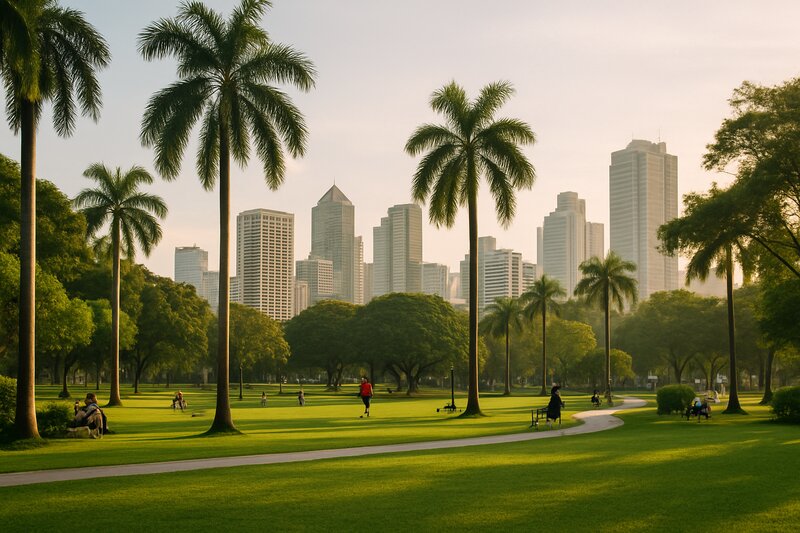
Rizal Park (Luneta): Manila's Historic Heart
Rizal Park, affectionately known as Luneta, stands as the Philippines' most historically significant green space. This 54-hectare park in the heart of Manila honors national hero José Rizal, who was executed at this site in 1896, sparking the Philippine Revolution against Spanish colonial rule. The park features 22 hectares of gardens, wooded areas, and open spaces, anchored by the Rizal Monument where an eternal flame burns and guards stand watch 24/7. The grand fountain, massive Philippine flag (one of the country's largest), and Kilometer Zero marker (from which all distances in the Philippines are measured) add to the park's significance. Visitors can explore various themed gardens including the Japanese Garden, Chinese Garden, and Orchidarium, each offering distinct landscapes and peaceful walking paths. The park's wide open spaces attract families for picnics, vendors selling refreshments, and locals practicing tai chi in early mornings. Located near Intramuros and Manila Ocean Park, Luneta serves as both a historical pilgrimage site and a functioning urban park where Manileños come to relax, exercise, and connect with their heritage.

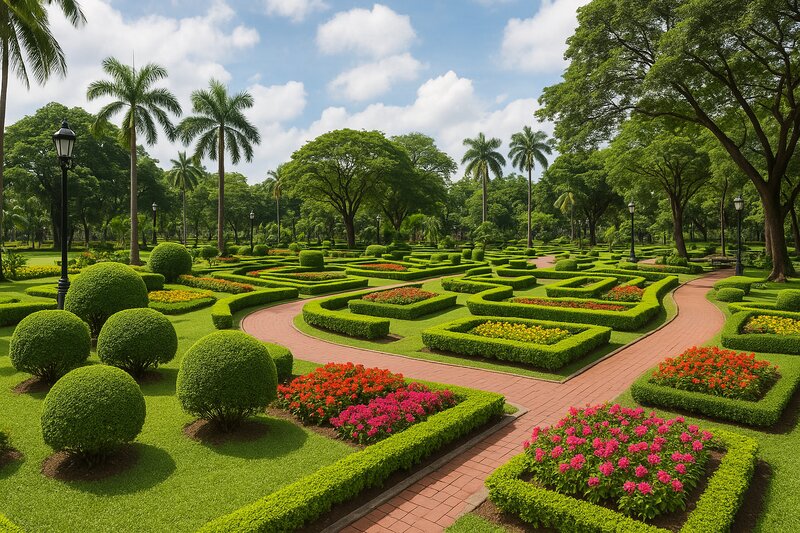
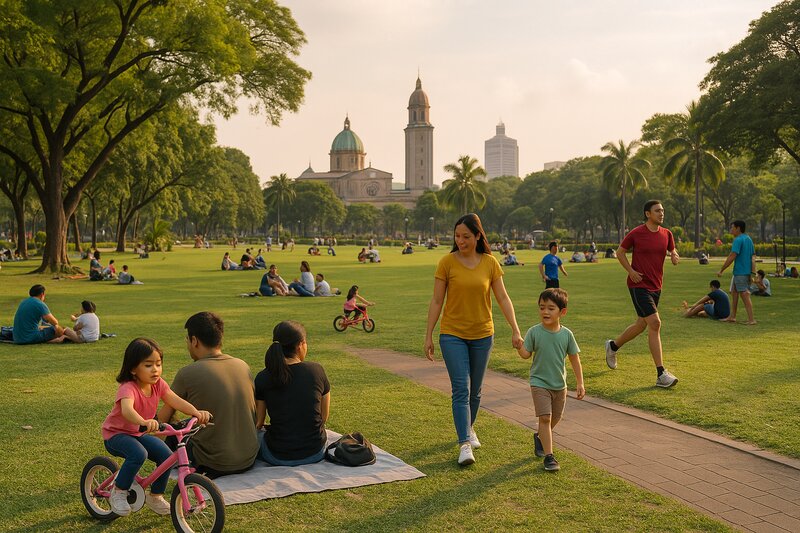
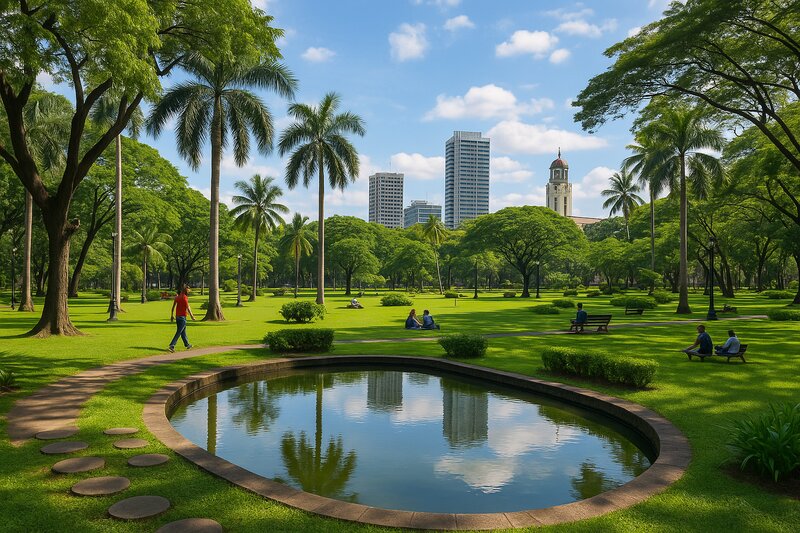
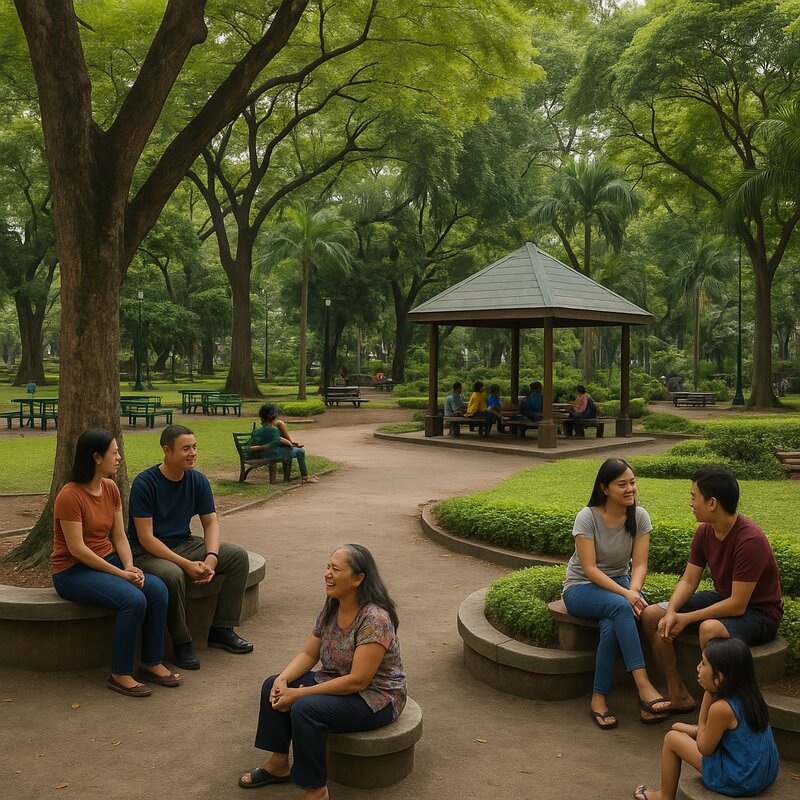
Ayala Triangle Gardens: CBD Oasis
Ayala Triangle Gardens proves that green space can thrive even in the heart of a concrete jungle. This 20,000-square-meter park sits at the center of Makati's central business district, surrounded by gleaming office towers and luxury hotels. Over one hundred trees--including towering rain trees and palms--provide shade and oxygen to the area, while a landscaped garden, pond, and art installations create a serene atmosphere despite the urban surroundings. Office workers flock here during lunch breaks for jogs on the perimeter path, outdoor yoga sessions, or quiet moments on benches under the trees. The park hosts various events throughout the year, but nothing compares to its famous Christmas Lights and Sounds show, when the entire park transforms into an illuminated wonderland with synchronized music and projections drawing huge crowds. Early mornings see fitness enthusiasts and dog walkers, while evenings bring couples and groups enjoying the cooler temperatures. The park's strategic location makes it easily accessible from offices, hotels, and malls in Makati, serving as a crucial green lung and mental health refuge for CBD workers.
BGC Parks: Integrated Urban Green Spaces
Bonifacio Global City's developers understood that livability requires green spaces, integrating parks throughout the township. The crown jewel is the 1.6-kilometer BGC Greenway, launched in 2017, which connects various parks and green areas via pedestrian and bike paths. Track 30th serves as a dedicated fitness park featuring a jogging path, yoga lawn, exercise equipment, meditation garden, and interactive art installations made from recycled materials--all sandwiched between Bonifacio High Street's shopping area and residential towers along 32nd Street. Terra 28th offers another pocket park with play areas for children. The Mind Museum Park surrounds the science museum with open lawns perfect for picnics and kite-flying. Bonifacio High Street itself features tree-lined pedestrian areas with benches and outdoor dining, creating a more walkable, human-scale urban environment. Burgos Circle combines dining with green space, with restaurants surrounding a central park area where families gather and events occur. BGC's integrated approach to green spaces means residents and workers are never more than a few blocks from trees, grass, and fresh air, making it one of Metro Manila's most livable areas.
La Mesa Eco Park: Nature Escape
La Mesa Eco Park in Quezon City offers the most extensive nature experience within Metro Manila's boundaries. Located at the La Mesa Watershed in Greater Lagro, this park provides a genuine escape from urban Manila with hiking trails, swimming pools, picnic areas, and opportunities to see birds and wildlife rarely spotted elsewhere in the city. The entrance fee (₱50 for adults, ₱40 for children and seniors, with discounts for Quezon City residents) supports conservation efforts in the watershed. Open Tuesday through Sunday from 7:00 AM to 4:00 PM (closed Mondays except holidays), the park attracts families seeking full-day outdoor recreation. Visitors can rent bicycles, explore nature trails ranging from easy walks to more challenging hikes, swim in designated pool areas, or simply relax in pavilions surrounded by trees. The park serves as an educational venue, teaching visitors about watershed conservation and biodiversity. Its distance from central Manila means fewer crowds than downtown parks, and the mature trees and natural landscape provide authentic nature immersion. Pack snacks and water, wear comfortable shoes, and arrive early to maximize your visit--this is the park for those seeking real outdoor adventure within city limits.
Arroceros Forest Park: Manila's Last Lung
Arroceros Forest Park holds the distinction of being Manila's only remaining nature park and has earned the nickname "Manila's Last Lung." This 2.2-hectare urban forest sits on Antonio Villegas Street in Ermita, just north of Manila City Hall and adjacent to Intramuros, right on the south bank of the Pasig River at the foot of Quezon Bridge. Despite its small size, the park packs remarkable biodiversity with 61 tree varieties and 8,000 ornamental plants providing habitat for 10 different bird species. Walking distance from LRT Line 1 Central Terminal station and directly across from the Manila Metropolitan Theater, the park offers an improbable oasis of secondary growth forest in the heart of the old city. The park's survival has been contentious--developers have repeatedly attempted to repurpose the land, but environmental advocates and concerned citizens have fought to preserve this crucial green space. Visitors experience a dramatic shift from urban chaos to relative quiet as they enter the tree canopy. While smaller and less developed than other parks, Arroceros provides crucial ecological services including air purification, temperature moderation, and psychological refuge. It stands as a reminder of what Manila lost during rapid development and what must be preserved for future generations.
Park Hours and Admission
Most parks open 5am-8pm with free admission. Check individual parks for specific operating hours.
Tips for Enjoying Manila's Parks
Maximize your park visits with these practical tips. Visit early morning (6-8 AM) for the coolest temperatures, fewest crowds, and best light for photography--you'll encounter serious joggers, tai chi practitioners, and locals walking dogs. Bring sun protection including hats, sunglasses, and sunscreen, as shade can be limited especially in more open parks. Hydration is crucial--carry water bottles as vendors may be limited or absent. Comfortable walking shoes matter more than fashion. Most parks are safe during daylight hours with good security presence, but avoid isolated areas after dark. Weekdays are less crowded than weekends, particularly Saturday and Sunday afternoons when families descend en masse. Many parks prohibit alcohol, littering, and loud music--respect these rules and other visitors. Photography is generally welcome but be respectful when photographing people. Some parks like La Mesa Eco Park charge entrance fees while others like Ayala Triangle and BGC parks are free. Street food vendors near park entrances offer affordable snacks, though you may want to bring your own picnic supplies for specific dietary needs.
The Mental Health Value of Green Spaces
In a city as dense and stressful as Manila, these green spaces provide more than aesthetic value--they offer essential mental health benefits. Studies show that time in nature reduces stress hormones, lowers blood pressure, improves mood, and enhances cognitive function. For Manila residents dealing with traffic, pollution, noise, and overcrowding, parks offer psychological refuge where minds can reset. The simple act of sitting under a tree, watching birds, or walking on grass provides grounding that urban environments actively prevent. Parents bring children to parks not just for physical exercise but to experience nature increasingly absent from daily life--many Manila children grow up with more screen time than tree time. These parks serve as community gathering spaces where social connections form organically, from morning jogging groups to evening family picnics. As Manila continues to grow and densify, preserving and expanding these green spaces becomes not a luxury but a necessity for public health and urban livability. Supporting conservation efforts, respecting park rules, and simply using these spaces sends a message to developers and city planners that green spaces matter.

